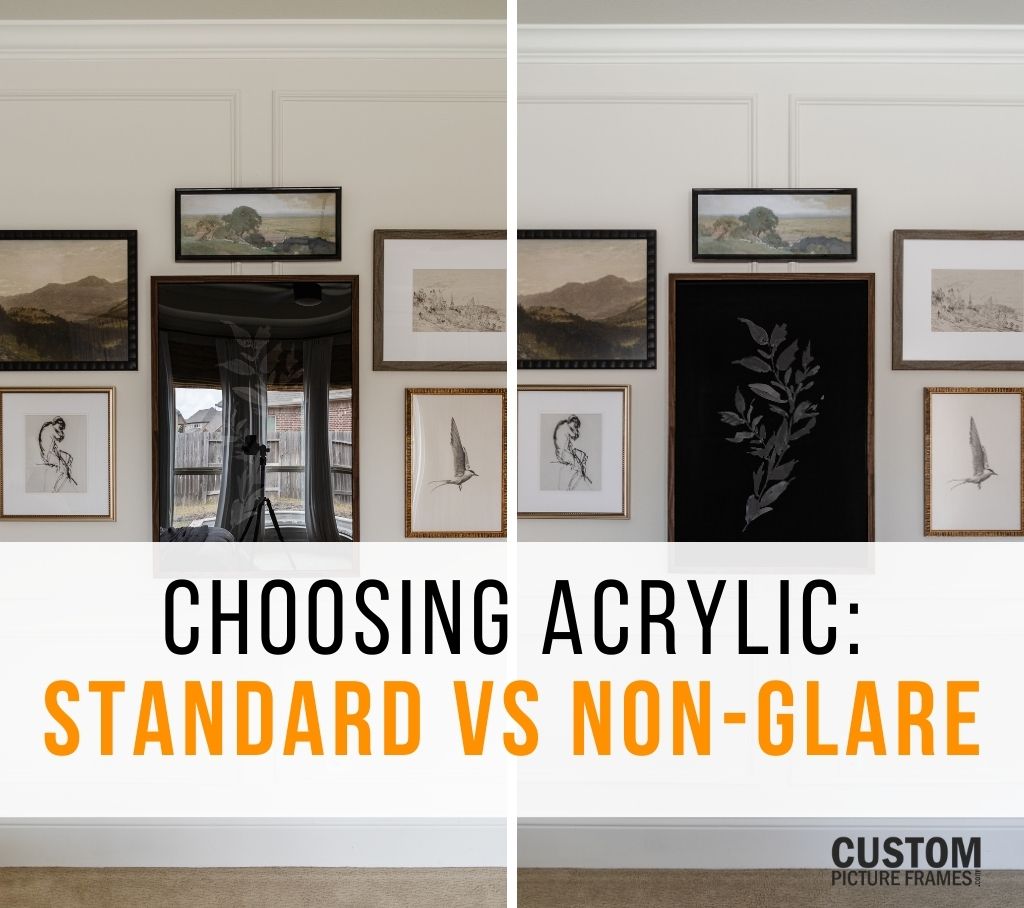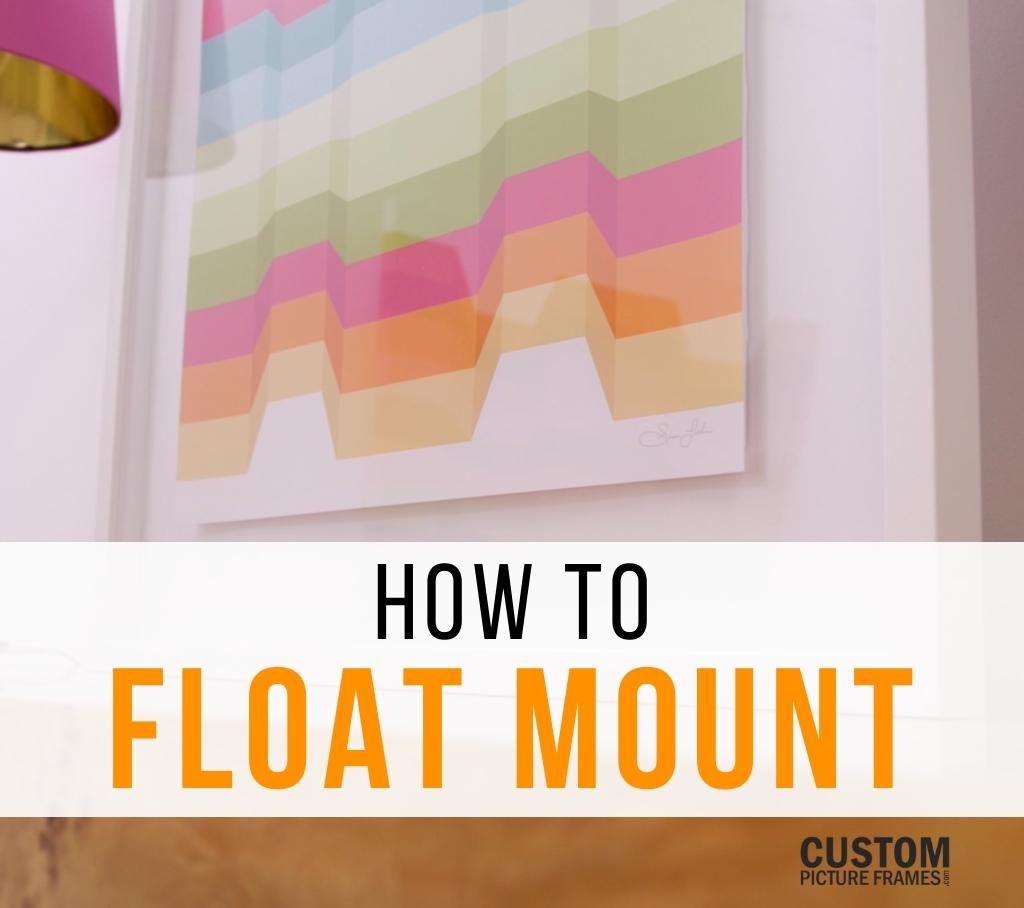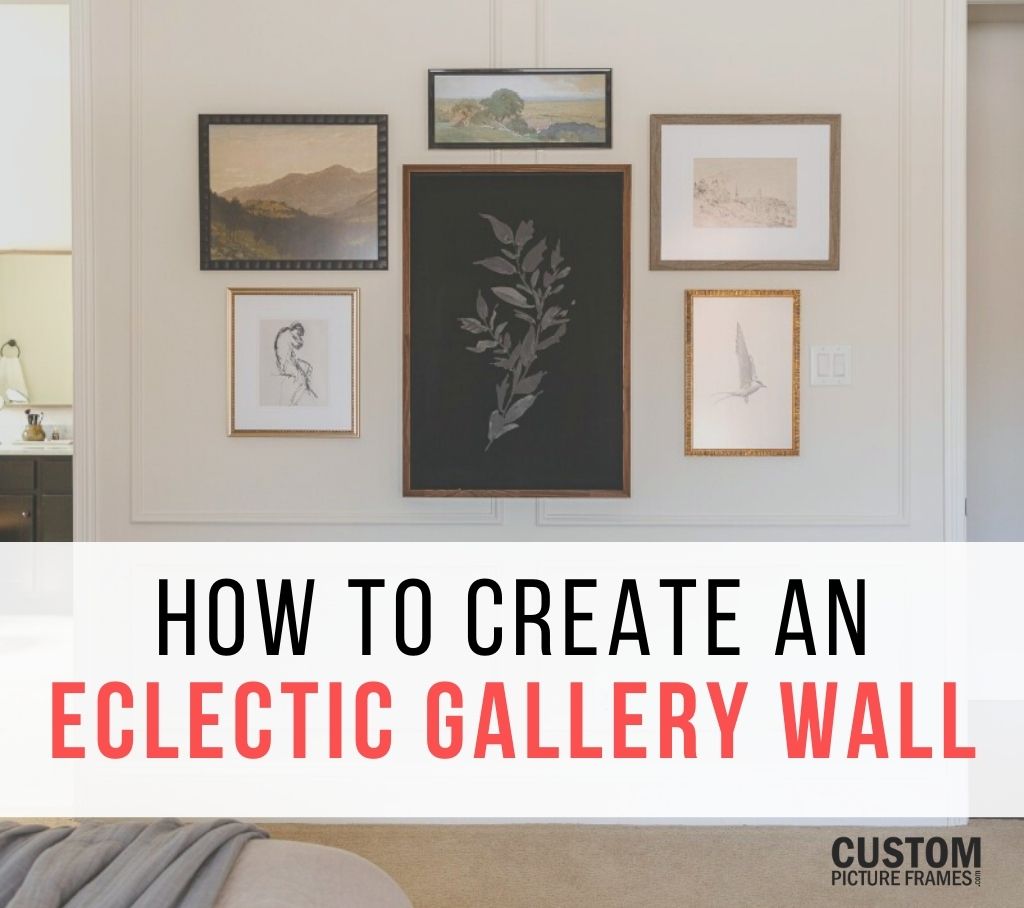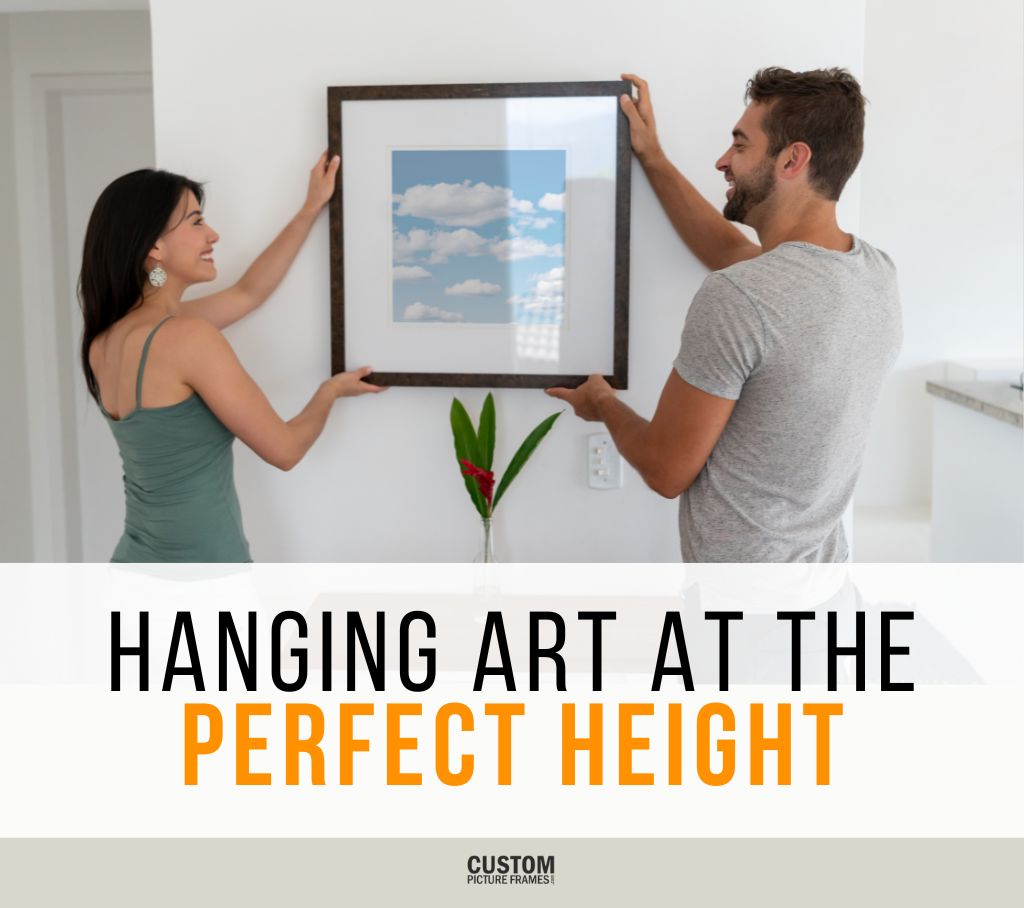
One of the most common dilemmas we face when it comes to decorating our walls is getting that perfect height for hanging picture frames. Should they be at eye level, above the furniture, or aligned with architectural elements? Fear not, for we're here to unravel the mysteries of the ideal hanging height. Whether you're adorning your living room, bedroom, or even that tricky stairway wall, we've got the ultimate guide to ensure your artwork is always at its best.
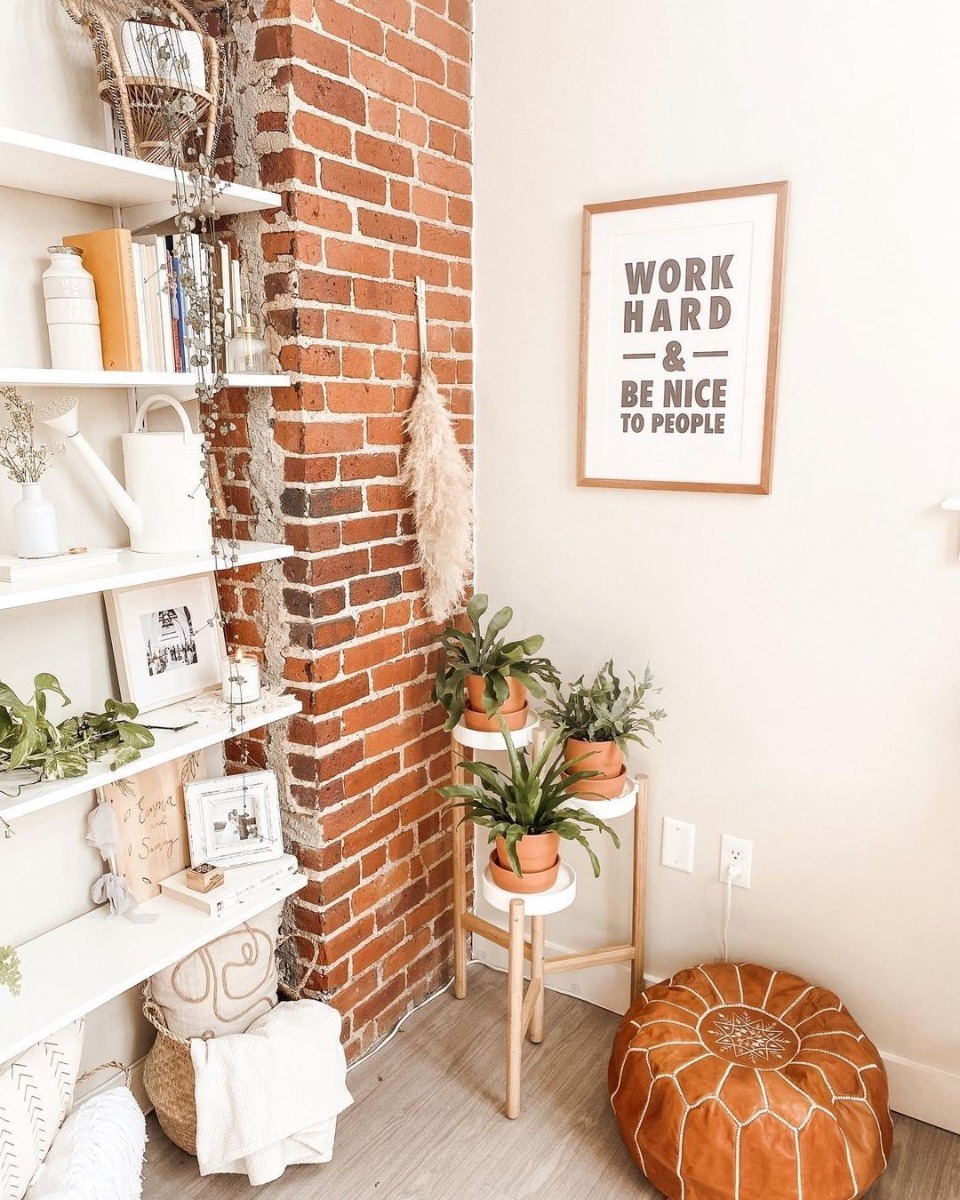
Image Credit: @wilsonaesthetic_
Living Room Elegance: Eye-Level Charm
Let's start with the heart of your home, the living room. The classic rule of thumb for most spaces is to hang your artwork at eye level. That's about 57 to 60 inches from the floor to the center of the frame. This height ensures that your guests can comfortably view your art without craning their necks. If you're creating a gallery wall or hanging multiple pieces together, keep the centers at this level to maintain a cohesive and visually appealing look.
Hanging art at eye level isn't just a random placement choice; it's rooted in the fundamental principles of art and human perception. This method is widely considered the standard because it offers numerous benefits, enhancing the space's aesthetics and the viewer's experience.
1. Connection and Engagement:
When art is displayed at eye level, it establishes an immediate connection with the viewer. The artwork becomes integral to the conversation, drawing people in naturally. Whether you're displaying a captivating painting, a cherished family photograph, or an intricate sculpture, positioning it at eye level invites individuals to engage with the piece intimately. It's like creating a face-to-face conversation between the viewer and the artwork.
2. Comfort and Accessibility:
Placing artwork at eye level ensures that it's easily accessible to everyone, regardless of their height or seating arrangement. Guests can comfortably view and appreciate the art without straining their necks or craning their heads. This inclusive approach is particularly important in spaces where people of varying heights, including children, might be present. Everyone can enjoy the artwork without feeling excluded or uncomfortable.
3. Visual Balance:
Hanging art at eye level contributes to the visual balance of the room. When artworks are consistently placed at the same height, they create a harmonious flow, naturally guiding the viewer's gaze. This balance is crucial, especially in spaces where multiple pieces are displayed together, like in gallery walls or curated art collections. Each piece gets its moment in the spotlight while contributing to the room's overall visual appeal.
4. Focal Point Creation:
Art positioned at eye level becomes an automatic focal point within the room. Whether you're designing a living room, dining area, or hallway, eye-level art draws attention and anchors the space. It serves as a visual anchor, guiding the viewer's focus and setting the tone for the entire room's ambiance. It's like giving your room a central, artistic soul that captures attention and leaves a lasting impression.
5. Psychological Impact:
On a psychological level, art at eye level is perceived as more personal and intimate. It invites viewers to interact with the artwork on a deeper level, eliciting emotional responses and creating memorable experiences. When people encounter art at their eye level, they are more likely to connect with it emotionally, making the viewing experience more profound and memorable.
In essence, hanging art at eye level transforms a space into a gallery of personal narratives, where each piece becomes a story waiting to be shared. It's not just about decoration; it's about creating an immersive environment that resonates with everyone who enters the room. So, the next time you're arranging your artwork, consider the power of eye-level placement – it's the key to transforming your space into a haven of artful inspiration.
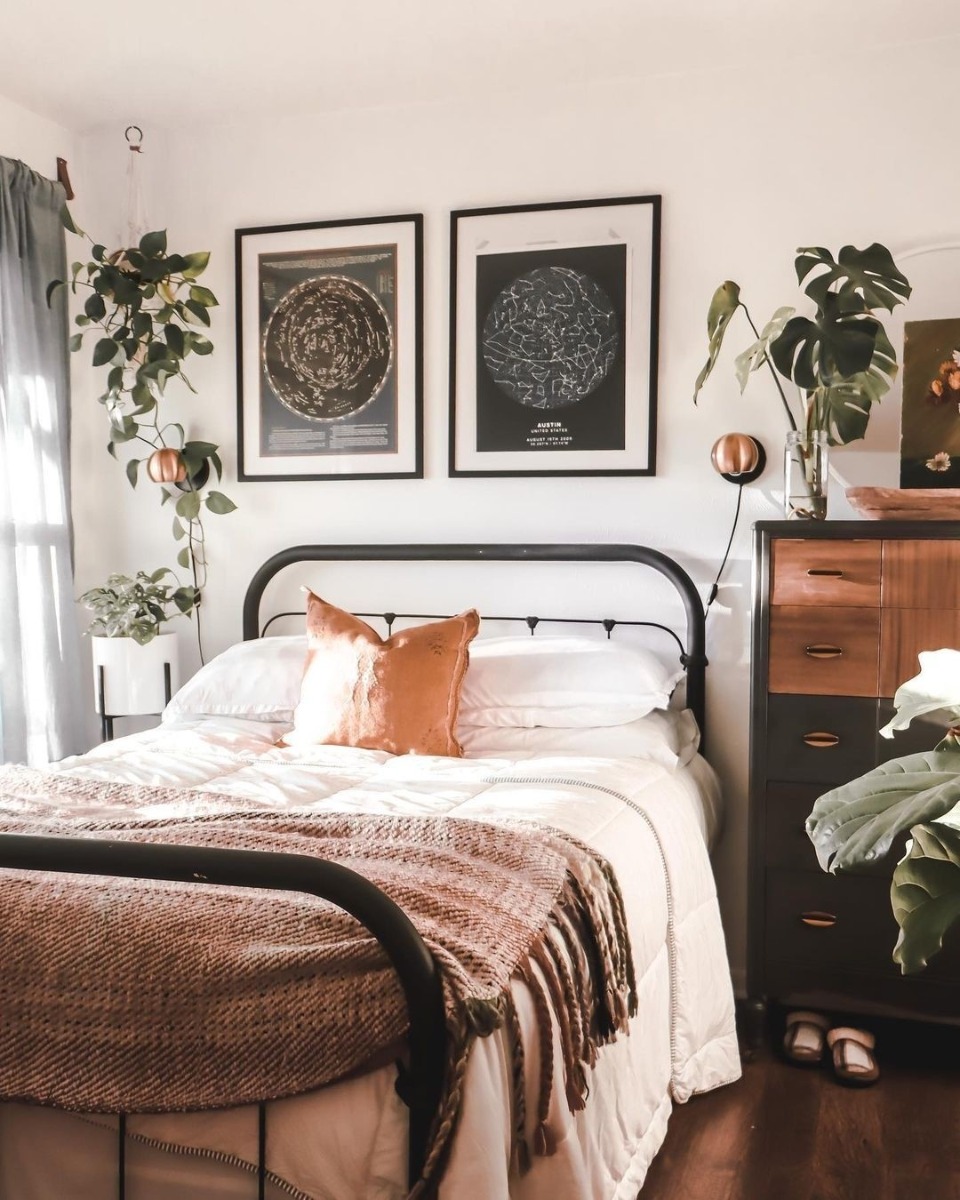
Image Credit: @allisonsextoninteriors
Bedroom Bliss: Above the Furniture
Hanging art in a bedroom is a great way to add personality and ambiance. The rules can be a little more flexible in the cozy confines of your bedroom. When hanging art above furniture like a bed or a dresser, aim for about 6 to 8 inches above the top edge. This creates a balanced and harmonious appearance. However, if you're working with smaller pieces, like family photos or delicate artwork, feel free to align their centers with your eye level for a more intimate feel.
Hanging art above furniture is an art form in itself, requiring a thoughtful balance between the artwork, the furniture, and the room's overall aesthetic. You create a visually pleasing and harmonious composition when you position art 6-8 inches above furniture, such as a sofa, sideboard, or bed. Here's why this height is so effective and how it enhances your interior decor:
1. Establishing Harmony:
When artwork is hung directly above furniture, the two elements connect seamlessly. Placing the art slightly above the furniture (6-8 inches) creates a visual balance, ensuring that the art and the furniture piece do not visually compete with each other. Instead, they complement and harmonize, enhancing the room's overall aesthetic.
2. Preventing Overcrowding:
Positioning art too low, so it directly touches the furniture, can create a cluttered and cramped appearance. You create breathing room by allowing some space between the artwork and the furniture. This approach prevents the room from feeling overcrowded, allowing each element to shine independently while contributing to the cohesive design of the space.
3. Optimal Viewing Height:
Art displayed 6-8 inches above furniture maintains an optimal viewing height for individuals standing and sitting. This ensures that the artwork remains easily visible and can be appreciated without obstruction. Whether you're enjoying a conversation on the sofa or seated at a dining table, the art is perfectly positioned for everyone in the room to admire.
4. Focal Point Enhancement:
When art is placed slightly above a piece of furniture, it enhances its significance as a focal point in the room. Whether it's a sofa, a console table, or a bed, the furniture becomes a central element, and the artwork above it acts as a captivating accent. This arrangement draws the eye upwards, emphasizing the room's height and adding a touch of verticality to the space.
5. Creating Visual Layers:
Introducing layers in interior design adds depth and dimension to a room. Placing art above furniture creates a distinct visual layer, separating the artwork from the furniture and the wall. This layered effect adds visual interest, making the space more dynamic and engaging. It also allows you to play with different textures, colors, and materials, enhancing the overall design aesthetic.
6. Personalization and Flexibility:
Hanging art slightly above furniture allows for flexibility in your decor arrangement. You can easily switch out artwork or change the furniture without repositioning everything. This adaptability ensures that your space can evolve with your changing tastes and preferences while maintaining a cohesive and polished look.
To sum it all up, hanging art 6-8 inches above furniture is a design choice that prioritizes balance, harmony, optimal viewing, and flexibility. It elevates both the art and the furniture, creating a visually pleasing and well-coordinated interior that reflects your unique style and sophistication.
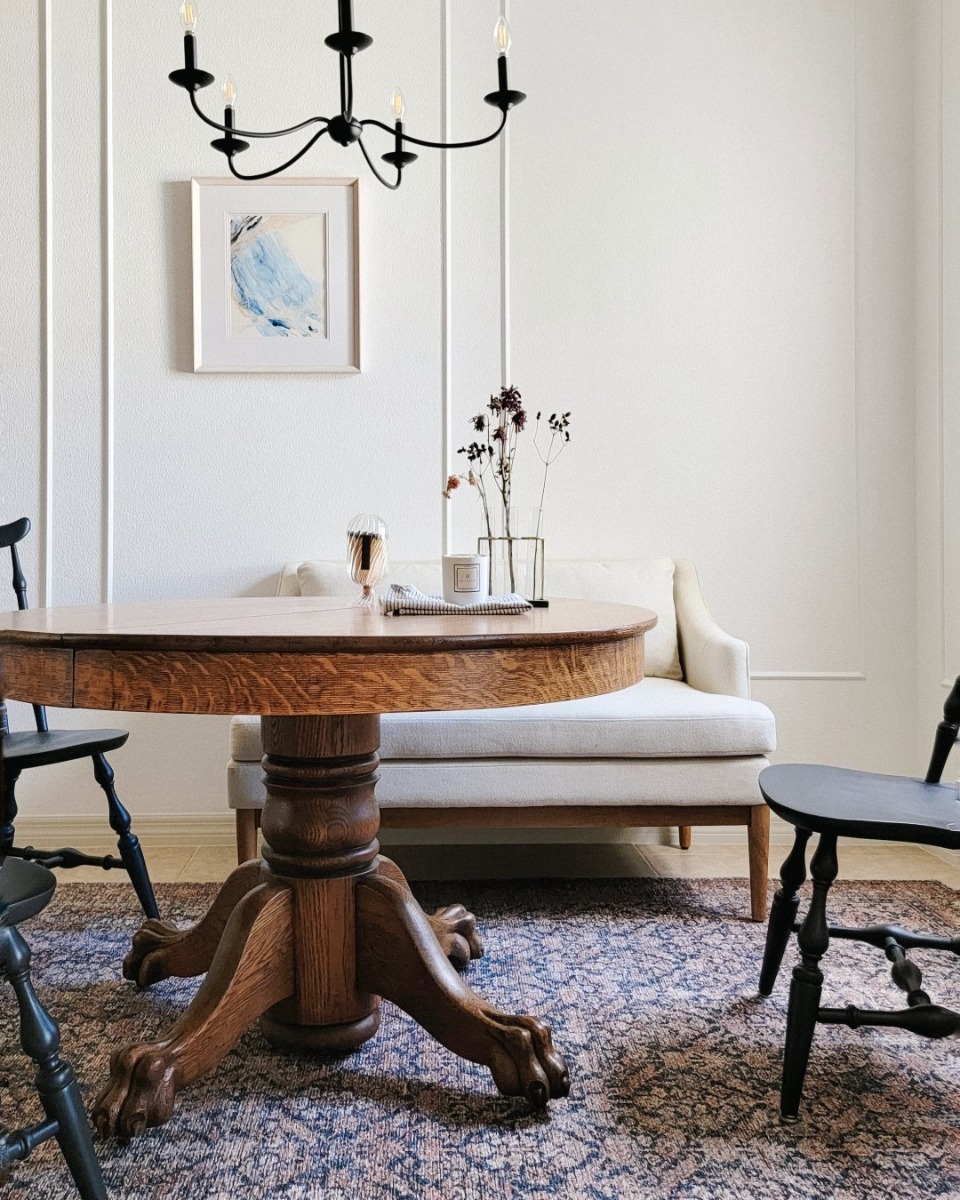
Image Credit: @percivalinbloom
Dining Room Drama: Slightly Above Eye Level
In dining areas, where your guests tend to be seated, you want your artwork to be visible but not overpowering. Hang your frames slightly above eye level, around 60 to 62 inches from the floor to the center. This height ensures that the artwork remains a focal point without becoming a distraction during meals. If you're decorating a bare wall without furniture, consider creating a dynamic arrangement with various heights to add visual interest.
Hanging art slightly above eye level is a strategic design choice that can profoundly impact a room's overall aesthetic and atmosphere. Here's why this approach is considered effective and visually appealing:
1. Avoiding Cramped Spaces:
Hanging art slightly above eye level prevents a room from feeling cramped or visually overwhelming. When artwork is placed too low, especially in smaller spaces, it can create a closed-in feeling. Raising the art slightly allows the room to breathe, making it feel more spacious and open.
2. Enhancing Vertical Space:
By positioning art above eye level, you draw the viewer's gaze upward, emphasizing the verticality of the space. This technique is particularly useful in rooms with low ceilings, as it creates an illusion of height. It adds a sense of grandeur and sophistication to the room, making it visually more appealing and elegant.
3. Emphasizing Architectural Features:
Placing art slightly above eye level allows you to emphasize architectural features, such as molding, wainscoting, or decorative panels. It highlights these elements, showcasing the craftsmanship and adding depth to the room's design. You create a harmonious balance between the artwork and the room's architectural details by aligning the art with these features.
4. Encouraging Interaction:
Art placed slightly above eye level encourages interaction. Viewers are naturally inclined to raise their gaze when looking at art, creating a more engaging and immersive experience. This interaction invites individuals to explore the details of the artwork, fostering a deeper connection with the piece.
5. Maintaining Balance and Proportion:
Achieving balance and proportion in interior design is key to creating a harmonious environment. Placing art slightly above eye level ensures that it complements other elements in the room, such as furniture, lighting fixtures, and architectural details. It prevents the art from overpowering the space or getting lost among other elements, maintaining a sense of equilibrium.
6. Showcasing Larger Art Pieces:
For larger artworks, positioning them slightly above eye level allows viewers to appreciate the piece in its entirety without straining their necks. This placement ensures that the art remains the room's focal point, capturing attention and admiration.
7. Avoiding Visual Clutter:
Art positioned above eye level avoids visual clutter, especially in rooms with multiple pieces of artwork or decorative elements. Keeping the art slightly elevated ensures that it stands out without creating a chaotic or disorganized visual impact.
In summary, hanging art slightly above eye level is a design choice that enhances the overall aesthetics of a room. It opens up the space, emphasizes architectural features, encourages interaction, and maintains balance, creating a visually pleasing and inviting atmosphere. This approach allows you to curate a space that is not only beautiful but also thoughtfully designed for maximum impact and enjoyment.
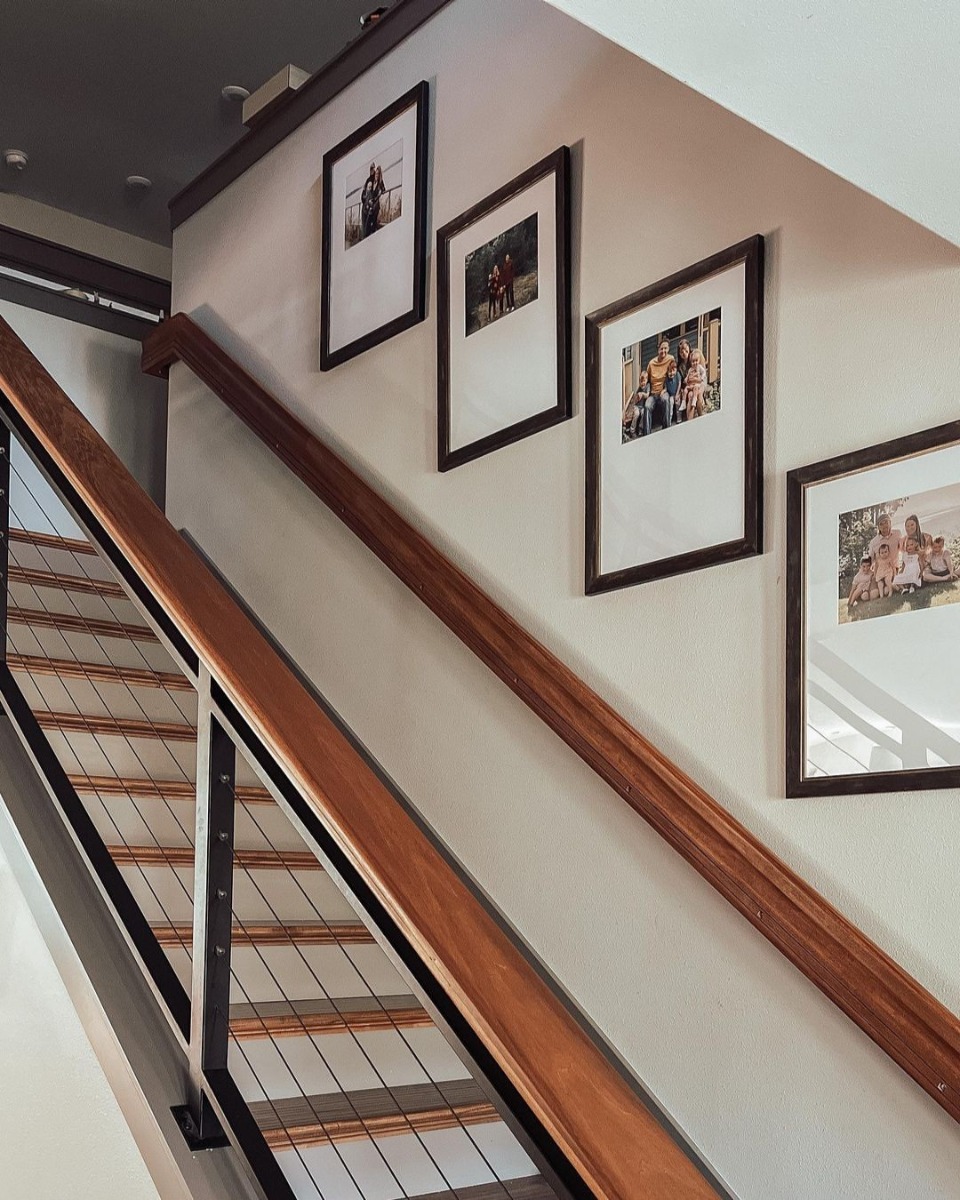
Image Credit: @functioningwith_rugrats
Stairway Statements: Follow the Ascent
Stairways can be a challenge, but they also offer a fantastic opportunity for a dramatic display. As you ascend the stairs, let your artwork follow the slope. Start with the first piece at the base, aligning its center with your eye level. As you move upward, maintain a consistent distance between the frames, about 6 to 8 inches apart, creating a visually engaging staircase gallery. If your stairwell has a landing, consider treating it as a separate wall and adjust the hanging height accordingly.
Hanging art in a stairway is a dynamic and creative way to transform what is often an underutilized space into a visually stunning gallery. Here are several compelling reasons why hanging art in a stairway is a brilliant design choice:
1. Utilizing Vertical Space:
Stairways provide ample vertical wall space, making them ideal for showcasing art. Utilizing this vertical space can create a striking visual impact that draws the eye upward. This not only adds aesthetic value but also emphasizes the height and openness of the area.
2. Creating a Focal Point:
Stairways often serve as a natural focal point within a home due to their central location. You enhance this focal point by adorning the walls with art, making it even more captivating. Eye-catching artwork can transform a mundane staircase into a conversation starter and a memorable feature of your home.
3. Adding Depth and Dimension:
Art strategically placed on a stairway wall adds depth and dimension to the space. As you ascend or descend the stairs, the changing perspective creates an ever-shifting tableau, adding intrigue and visual interest. This dynamic quality makes the stairway more engaging and visually appealing.
4. Showcasing a Story:
A stairway gallery can be a curated collection of artwork, photographs, or memorabilia that tells a story. Whether it's family photos, travel mementos, or a thematic art collection, the stairway provides an opportunity to showcase your personal narrative. This creates an intimate and meaningful ambiance, turning a simple staircase into a gallery of memories.
5. Enhancing Architectural Features:
Stairways often feature interesting architectural elements, such as banisters, railings, or landings. Art can be strategically placed to complement or contrast with these features, enhancing their visual appeal. Artwork can soften the angularity of staircases or emphasize their modern or traditional design, adding an artistic touch to the architectural structure.
6. Encouraging Exploration:
A stairway gallery invites exploration. Guests and family members are naturally drawn to observe the artwork as they ascend or descend the stairs. This interactive experience encourages contemplation and discussion, fostering a deeper connection with the displayed pieces. It transforms a functional space into an interactive art installation.
7. Enhancing Lighting and Ambiance:
Well-chosen artwork can interact with natural or artificial lighting in the stairway, creating captivating plays of light and shadow. This interaction enhances the ambiance, giving the space a warm and inviting glow during the day and an alluring, dramatic atmosphere in the evening. The interplay of art and light can significantly impact the mood and character of the stairway.
In summary, hanging art in a stairway is a strategic design choice that maximizes vertical space, creates focal points, adds depth, showcases personal stories, enhances architectural features, encourages exploration, and enhances lighting and ambiance. It transforms a functional space into a visually enchanting and emotionally resonant part of your home, making the stairway a passage and an experience.
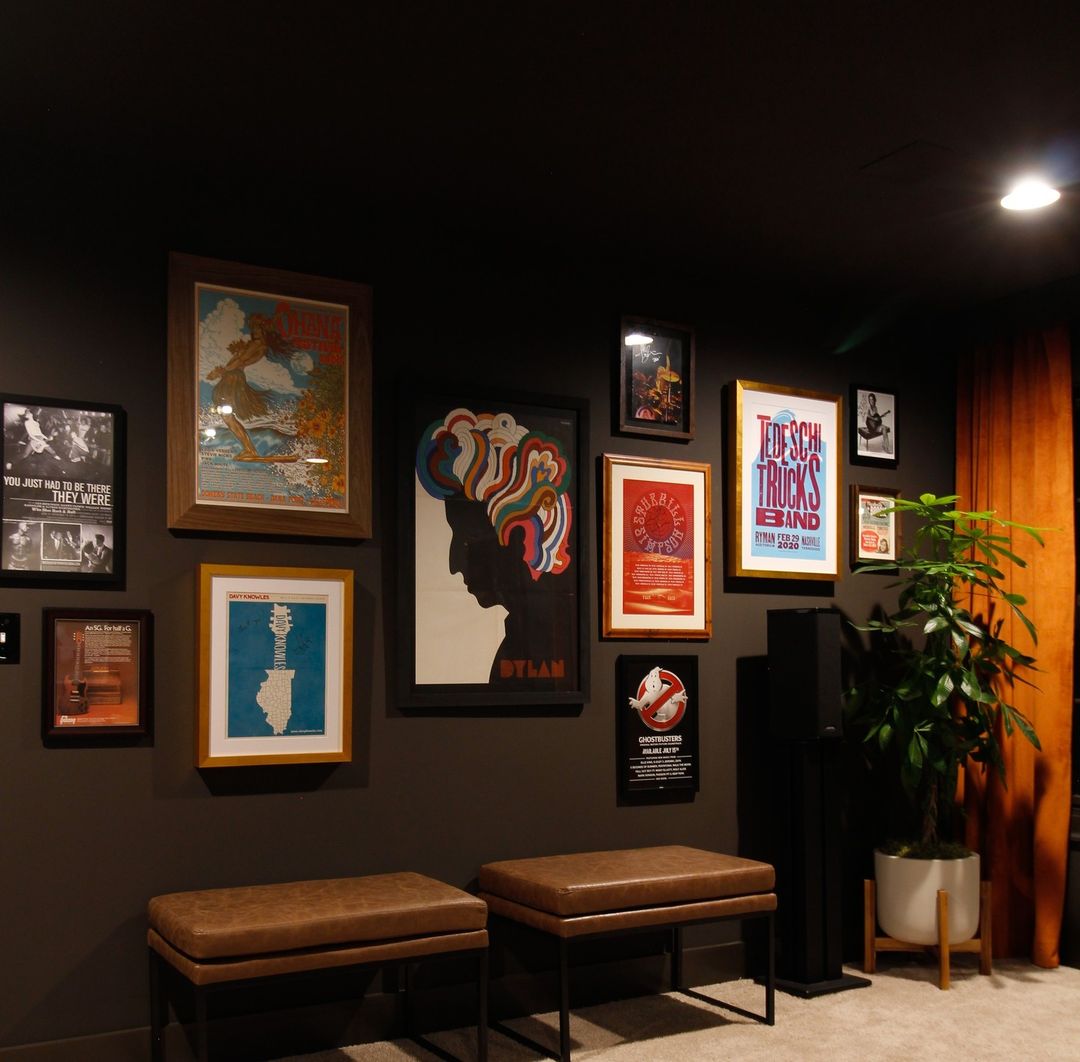
Image Credit: @deeplysouthernhome
Mixing It Up: Creating Unique Configurations
When you're working with diverse artwork sizes and configurations, consider mixing up the heights. Play with asymmetry by combining tall and short frames in a cohesive manner. For instance, you could align the tops of shorter frames while keeping the centers of taller frames at eye level. This dynamic approach adds energy and personality to your space, making it feel curated and inviting.
Hanging art in unique configurations is a trend that has gained significant traction in the realm of interior design and for good reason. Here’s why embracing unconventional arrangements can elevate your space and create a visually captivating environment:
1. Personal Expression:
Unique art configurations allow for unparalleled personal expression. It's a chance to move away from traditional symmetrical layouts and create a display that resonates with your individuality. Whether it’s an asymmetrical gallery, a geometric arrangement, or a mix of different art forms, these configurations showcase your distinctive style and creativity.
2. Dynamic Visual Impact:
Unconventional art placements infuse a space with energy and dynamism. They break away from the predictable patterns, adding a sense of movement and excitement to the room. Asymmetrical arrangements, for example, can guide the eye around the room, creating a sense of exploration and discovery for anyone entering the space.
3. Embracing Room Characteristics:
Unique art configurations allow you to work with the room's characteristics. For instance, traditional symmetrical arrangements might not fit seamlessly in rooms with architectural quirks like alcoves, nooks, or slanted ceilings. Embracing the room’s unique features with creative art placements can turn these challenges into design opportunities.
4. Creating Focal Points:
Unique art configurations naturally draw attention. Placing artwork in unexpected places or arranging it in unconventional patterns automatically creates focal points in the room. These focal points become conversation starters, guiding the eyes and conversations of those in the space.
5. Maximizing Space:
Traditional art placements might feel limiting in smaller rooms, where every inch counts. You can make the most of available wall space by adopting creative configurations. This might mean placing art at varying heights, using corners effectively, or even integrating art into functional furniture pieces.
6. Enhancing Theme and Mood:
Unique art arrangements can be curated to enhance specific themes or moods within a room. For example, a cluster of nature-themed art pieces in an irregular arrangement might create a cozy woodland atmosphere, while a linear arrangement of vibrant abstracts could infuse a room with a modern, energetic vibe.
7. Mixing Art Forms:
Embracing unique configurations often involves mixing different art forms like paintings, sculptures, and textiles. This blending of mediums adds texture and depth to the arrangement, making the art display more tactile and visually engaging. It creates a multi-dimensional experience that appeals to both the eyes and the senses.
In essence, hanging art in unique configurations allows for unparalleled creativity, personalization, and adaptability within your space. It’s an opportunity to break free from conventional constraints, allowing your personality and style to shine through. By embracing the unconventional, you transform your living space into a dynamic, visually stimulating, and deeply personal sanctuary.
Final Thoughts: Your Art, Your Style
Remember, these are just guidelines, not strict rules. Your personal style and preferences should always be the guiding force behind your decorating choices. Don't be afraid to experiment, mix heights, and create configurations that resonate with your unique taste. After all, your home is your canvas, and your creativity knows no bounds. So go ahead, hang your art with confidence, and let your walls reflect the masterpiece that is your life. Happy decorating!
About The Author
 |
Brittany DeMauro is the Creative Director here at CustomPictureFrames.com. With a background in creative writing and a passion for all things DIY, you'll find her in the shop crafting content. She can always find space for a fun gallery wall and loves discovering new artists to display around her home (in custom frames, of course!) When she's not creating content for our brand, she can most likely be found binging shows on Netflix with her two cats. |


